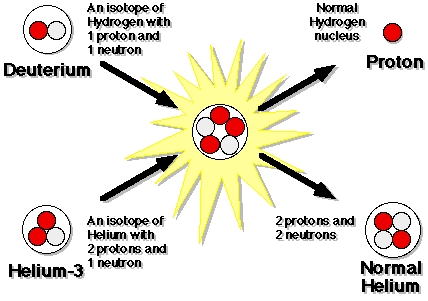
The field of nuclear fusion is truly a wondrous, exciting field. While the concept itself is now over a century old, humans have yet to harness this incredible power. Most people are familiar with traditional nuclear energy – those looming nuclear reactors that we only hear about when they break down. However, traditional nuclear energy is derived from the splitting of atoms – this process releases a lot of energy and is called nuclear fission. It is the same principle that is at work in the atomic bomb. The nuclear fusion process is actually quite different.

To enlighten us, we took a trip to MIT’s fusion research facility to meet Alcator C-Mod Tokamak, a huge, billions of dollars experimental facility in Cambridge. When we were finally let in the building, we received a presentation about the fusion process from an MIT graduate student who was involved with the research. Basically, the fusion process melds together two atoms – the opposite of fission. The energy created from doing something like this is unheard of. A single fusion could power the entire city of Boston. The problem is that it is an incredibly complex process. First, matter needs to get hot. Very, very hot. Temperatures that are only found in the core of the sun hot. To do this, matter in the fusion chamber (which the student giving the presentation informed us was usually a hydrogen isotope) must be heated until it reaches the state of matter known as plasma. At such a high temperature, the atoms break down into a sinewy mix of electrons, protons, and neutrons – a kind of super-heated matter soup.


We use plasma in many things – TVs, neon signs, phones – but extracting energy from it is another matter entirely. Using an incredibly strong electromagnetic current, the plasma is trapped running in circles in a tightly wound coil shaped like a hollowed out doughnut – this design is called a “tokamak” and ensures that the scorching hot plasma will not break its cycle and damage the machine itself. The scientists and students at MIT were hard at work during our visit trying to determine how best to extract energy from this process, using methods that I will not claim to understand in the least, but the site of the actual machine really amazed me. It is located in a huge warehouse, has multiple floors, and tons and tons of electric equipment, sensors, readers, and all manner of contraptions that look like a super-villains lair from a kitschy James Bond flick.

As of yet, the fusion process still needs perfecting. However, funding is scheduled to be cut off for the project. Without this funding, the Alcator C-Mod Tokamek will cease to be – and we will cease to be that much closer to harnessing an energy source that has the potential to create energy for all – with no harmful effects to our planet, and could for all intents and purposes solve the energy crisis – indefinitely. Hopefully, this process will continue to be researched and studied. It is my hope that nuclear fusion will happen within my lifetime.
Great post, you have pointed out some fantastic points , I likewise think this s a very wonderful website